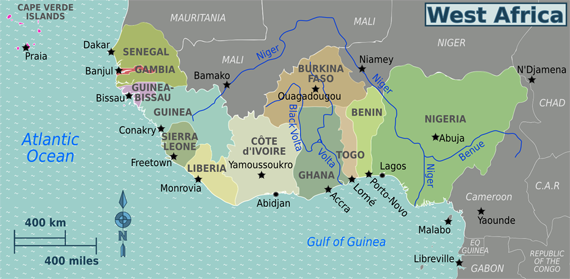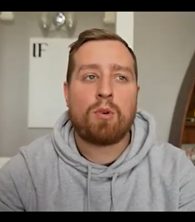Gold Mining in West Africa
Does exotic always mean high risk...?
ANALYST at Jennings Capital Dan Hrushewsky sees investors' understanding of risk as directly related to the unknown. West Africa is unknown to many investors but it has a long history of mining, good infrastructure, favorable geography, many active producers and huge potential.
In this interview with The Gold Report, Hrushewsky details three gold mining business models active in West Africa that provide investors with asymmetric possibilities of limited downside and strong upside in a world-class mining jurisdiction.
The Gold Report: When many mining investors hear West Africa, the first thing they think of is risk, especially political risk. Is that a baseless concern? West Africa sounds exotic, but does that mean that it's high risk?
Dan Hrushewsky: I think risk often times has to do with the unknown. The less we know about something, the more risky we think it is, although one doesn't mean the other. Exotic does not have to mean higher risk from an investor standpoint. The lack of general investor awareness of West Africa provides outsize return opportunities for those who are aware.

TGR: Some gold investors will be familiar with Ghana because several majors have been active there for many years. What other countries stand out in West Africa as being mining friendly and prospective?
Dan Hrushewsky: Burkina Faso is a real standout for several reasons. First, it's had relative stability for the last 20–25 years. Second, the potential for exploration is huge because it was fairly late to the exploration game, especially compared to Ghana. Burkina Faso's adoption of a world-class mining code in the mid-1990s kick-started modern mining exploration, which has paid dividends in the form of six new mines starting up in the country in the last five years. On the other hand, Ghana has seen at least 60 years of modern mining exploration. Other areas in West Africa are highly prospective for gold as well, including Mali, Liberia, Senegal and Côte d'Ivoire.
TGR: The two most interesting countries for mining from your point of view are Burkina Faso and Ghana?
Dan Hrushewsky: I like those two a lot, but that doesn't mean that the others don't have a lot of potential. Both Ghana and Burkina Faso are interesting for the combination of exploration potential, stable operating environments and stable political situations.
TGR: What's the infrastructure situation like?
Dan Hrushewsky: The highways in Burkina Faso are top quality, almost at the level of North American single lane highways. The construction quality and level of maintenance is very high. Burkina Faso is a very flat country, so accessibility is not a problem. If your destination is not on a road, you can generally just drive there anyway by going off-road because of the flat, savannah-type topography and dry climate. The power infrastructure varies with the location. Some parts of the country have access to hydroelectricity that comes in through Ghana, through the Lake Volta Power Authority. Most of the country is outside that system and companies have to produce their own power, but that's largely the situation in most of Africa, and in many mining jurisdictions in the world.
TGR: Are the best projects in this part of West Africa financeable? Are they moving forward?
Dan Hrushewsky: Financing a mining project is currently a challenge worldwide. The risk trade is still generally off. While some of the major stock indices are hitting new highs, junior and senior mining equities are very undervalued due to investors' lack of appetite for mining company risk, and the turbulent gold price environment. This makes financing the equity component of an overall financing package a very dilutive exercise. It doesn't matter whether the mining project is in Ontario or in West Africa, it is still a tough go. That's the general landscape.
Having said that, selected high quality mining projects are finding equity financing regardless of location. In West Africa, I can cite a couple of projects that have been successful in raising equity recently. These have tended to be higher quality projects with a critical mass of several million ounces plus an above-average grade.
TGR: What is an above-average grade in West Africa?
Dan Hrushewsky: Generally for an open-pit mine, an above-average grade is 2 grams per ton (2 g/t) and up. Many producing underground mines in West Africa have grades in the 4–10 g/t range.
TGR: A few companies have been able to get financing for some projects. What is the nature and structure of those financings? Who's contributing the capital to move things forward?
Dan Hrushewsky: With the equity markets in a risk-off holding pattern, there has been a global vacuum in project financing. Stepping into the void have been numerous "non-traditional" financing players. Two sources of non-traditional financing are the royalty and streaming companies. Over the last 18 months, they have been getting more traction than normal. Another increasing source of funding has been sovereign wealth funds from the Middle East and Asia. As an analyst, I hear about lots of private money, especially from the Middle East, actively chasing projects in the space. When oil prices are high, you see a lot of petro Dollars sloshing around the Red Sea basin, looking for a place to go. With the currencies being questionable, these funds often go into gold-related investments.
What I've also been noticing is a surge in private equity activity. Recently, several private equity funds have been created that plan on entering the gold and base metal sectors.
Another interesting trend we are seeing is traditional project debt financiers becoming more risk-on.
TGR: What specifically do you look at when you're evaluating particular projects? Are deposit size and grade at the top of the list?
Dan Hrushewsky: I don't look for particular geology or a particular deposit type or a particular region. I look for a good business model. Gold mining is a business just like any other business. The projects that I analyze can be classified into three main business models.
The first model is the high-grade deposit. Why are high-grade deposits attractive? Upfront capital expenditures (capex) will be low, as will operating costs. Low operating costs mean high margins. High margins are good because the project's debt capacity is higher and because the project can make money in high and low gold price environments. It's almost a vaccination against a potential drop in gold prices.
A second business model that I like is a heap-leachable deposit. A heap-leach business model is a low capex, low operating cost one. That is important because with the lower capex it is easier to finance and the low operating costs mean higher margins, which mean resilience to lower gold prices.
There's also a third business model that I have in my portfolio of West African projects and that is the low-grade but very large deposits. Such projects have a higher cost structure. Even so, such a project can be very appealing to investors because it has a high leverage to the price of gold. For a given change in the gold price, the value of the project goes up the most. As an investor, if you believe the price of gold is going up, these are the type of projects that will, on a percentage level, give you the most leverage to gold price increases. Normally, a higher-cost project is sensitive to gold prices going up, but the flip side is that the same project is sensitive to gold prices going down.
TGR: You describe your three favorite business models for producers. How would investors choose the appropriate model for themselves?
Dan Hrushewsky: Each model offers something for investors. It just depends on risk tolerance and one's view on future gold price direction.
TGR: I am glad you brought up the price of gold. Gold has been going sideways for a year and a half. But investor expectations for continuously rising gold prices make the sideways price action feel like an eternity.
Dan Hrushewsky: The price has been sideways, but at very high levels. We have trained ourselves to expect constant increases in prices. That is not realistic for anything. No trend goes on forever. Although gold prices are at very high levels, many investors stand there disappointed at $1,600/ounce. It is a little ironic.
TGR: In a way, things have never been better, but people are disappointed.
Dan Hrushewsky: For the price of gold, things are very good. Pricing is not at its recent peak, but so what? It's still a very high price and if you're producing gold, you're making a ton of money.
TGR: Let's discuss exit strategy. Some of the majors had major write-offs with big merger and acquisition (M&A) activity in West Africa. It appears that the M&A window is closed for now. What does that mean for the growing miners that you cover? Is regional aggregation an option? What are the various exit strategies?
Dan Hrushewsky: Investors love the story of their companies getting taken over by a major. It is almost a Cinderella story, but there's a reason Cinderella is a fairy tale. Big takeovers at high premiums are rare. It happens so rarely that it doesn't impact anybody in a normal course of events. In this market, the big buyout is so rare, nobody will miss it if that activity pulls back.
I see a lot of good management teams. A lot of them are pretty smart. It's not a stretch of the imagination to have a team build one project and then look around and try to do it again with its pipeline of projects, and/or with other companies' projects via mergers/acquisitions. I think that will happen to some extent. Although consolidation in West Africa has been a story that was on the verge of being told for at least five years and hasn't really happened, times change and the next five years should be different. Companies will be doing deals and consolidating on their own, without the majors. The class will organize itself as opposed to the teacher coming in and telling everybody what to do.
TGR: Can you sum up the reasons why investors should be interested in West Africa and why they should take a look at some of these projects?
Dan Hrushewsky: One reason is that it offers huge potential for discoveries. Relatively speaking, it is still early days with regards to modern exploration, and many deposits remain to be found. Also, being early days, most exploration has been for shallow deposits, and for the most part, depth extensions have not been investigated. One example of what is possible is the Obuasi mine in Ghana, which has been mined for over 100 years and goes as deep as 1,500 meters.
Another reason is that the region is generally very open to gold mining. Gold mining constitutes a large part of the West African countries' GDP and foreign currency earnings. Growth of the industry has been the focus of most of the governments in West Africa, as evidenced by supportive mining codes. Burkina Faso is a good example. The incredible growth in its mining industry over the last five years—six new mine start-ups—reflects the very welcoming environment for gold mining in that country.
Finally, West Africa is a region ripe for consolidation, and we will see more of that occur in the future, especially if financing remains difficult to obtain.
TGR: Thanks for your insights. I look forward to following up in the future.












 Email us
Email us